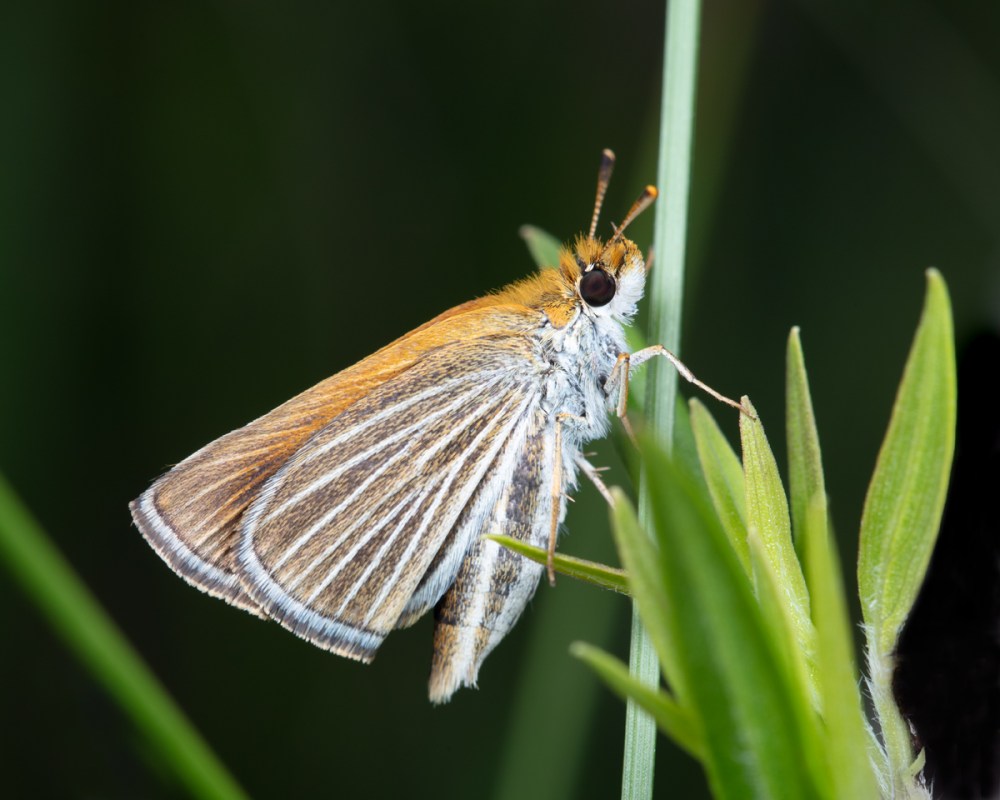RM of Stuartburn one of two remaining homes for butterfly
Advertisement
Hey there, time traveller!
This article was published 27/07/2020 (1766 days ago), so information in it may no longer be current.
Nineteen critically endangered Poweshiek skipperling butterflies were released in the Tall Grass Prairie Preserve in the RM of Stuartburn.
In a Monday announcement, the Assiniboine Park Conservancy and the Nature Conservancy of Canada announced the third year of releasing butterflies into that area and the first time the team has bred the tiny butterflies on site at the Assiniboine Park Zoo.
The Tall Grass Prairie Preserve is the only Canadian home of the critically endangered Poweshiek skipperling butterfly, and one of only two places they live in the world.

“The Poweshiek skipperling is on the verge of extinction and the Assiniboine Park Conservancy is in a unique position to change that before the species is lost forever,” Laura Burns, research conservation specialist at the Conservancy said.
A small grassland butterfly, the Poweshiek skipperling butterfly was once found in a range from southern Manitoba to the Midwestern U.S.
Melissa Grantham, conservation biologist with the Nature Conservancy of Canada said that range existed as recently as 2012.
Currently there may fewer than 500 of these butterflies left, in a small pocket in southeastern Manitoba and another pocket near Flint, Michigan.
Grantham said that’s rare, as usually when a species is in trouble, its habitat shrinks to a central location. The two sites are also different geographically. In Manitoba it’s tall grass prairie that’s home to the butterflies while in Michigan it’s fen geography, more of a boggy type of landscape.
Grantham said it’s tough to get accurate numbers, but said the situation is dire.
‘”We think that there’s likely less than 200 in Manitoba,” she said.
This was the third year butterflies have been reintroduced to the site with 19 added. Last year 13 adult butterflies were released and in 2018, six butterflies were returned to the wild.
And while those numbers are small, Grantham said they are very significant.
“I think anything we can do to help is hugely significant for the species,” she said. “If the zoo is able to rear these individuals successfully from egg to adult, put them back into the field where they are from and that we’re still seeing them the next year… that’s huge.”
Saving the Poweshiek skipperling is about more than just that one type of butterfly.
Grantham said butterflies are particularly sensitive to changes in their habitat and are an indicator species.
“When we’re seeing issues with populations like the Poweshiek skipperling, it can be indicative or linked to issues with prairie health,” she said.
More than 90 percent of the world’s grasslands no longer exist, and that puts species like this at risk.
The Poweshiek skipperling does not look like a typical butterfly. Smaller than a loonie, it has white stripes under its wings, sending flashes of silver as it flies. With two sets of wings, Grantham said it often has one set up and another lying flat, giving it the appearance of a little fighter jet.
“I think Poweshieks are a really neat little species,” Grantham, who has worked with them since 2015 said. “A lot of people would call them ugly but think they are cute little fuzzy things.”
The Poweshiek skipperling conservation project is a collaborative effort with the Assiniboine Park Conservancy, Nature Conservancy of Canada, Minnesota Zoo, U.S. Fish and Wildlife Service, University of Winnipeg and other partners in Canada and the United States.
That international partnership is key according to Grantham.
“I think it’s really important that we’re making sure to address issues for the species range wide, not just here in our own province,” she said.
More steps are being taken. In addition to working to restore the local population, researchers at the Assiniboine Park Conservancy are in the process of sequencing and analyzing the Poweshiek skipperling genome. That information can provide insight into why the population has suffered such severe decline.
